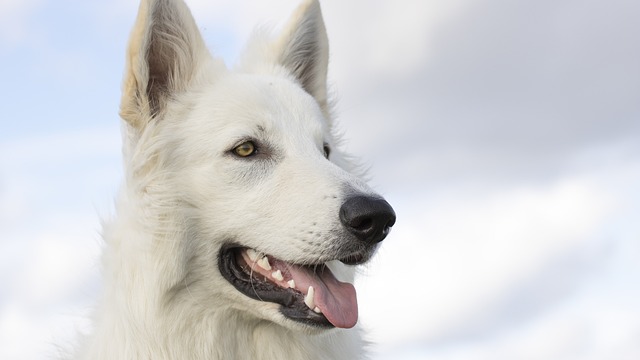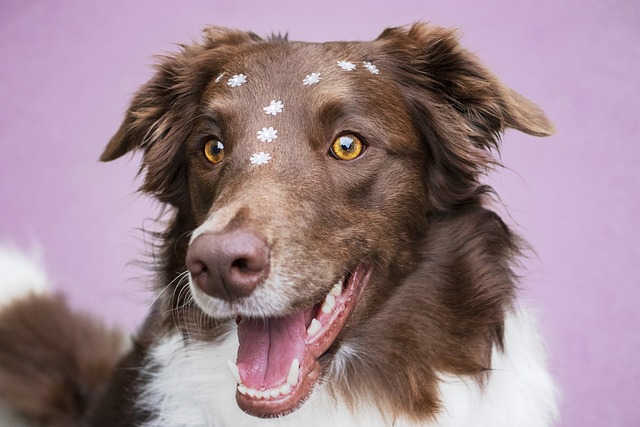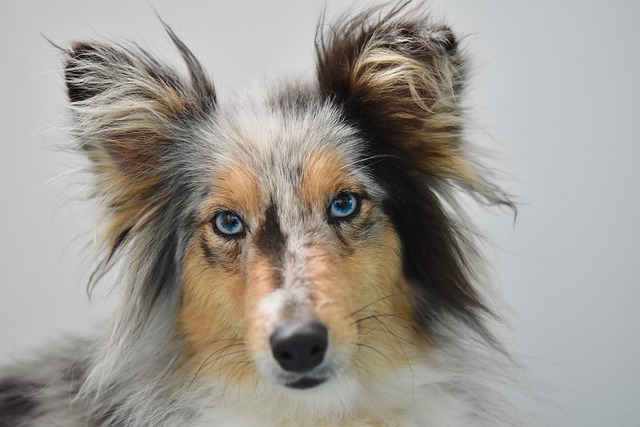When the morning light filters through the window and into the room, the dog that used to wag its tail eagerly to welcome a new day is now curled up in the corner, frantically scratching its abdomen with its hind legs. Under the once smooth fur, the reddened skin is covered with scabs. Such a scene is like a heavy hammer, striking hard at the heart of every dog owner. Dog scabies not only brings physical suffering to the dog but also an indescribable pain to the owner's heart. Searching for the most effective treatment method has become a battle to protect the dog against the clock.
Canine scabies is a highly contagious skin disease caused by the parasitic scabies mites. These tiny creatures, only 0.2 - 0.5 millimeters in length, use their sharp chelicerae and the suckers at the ends of their tarsi to dig tunnels in the dog's epidermis. While greedily feeding on the skin tissue and lymph fluid, they continuously excrete waste. The antigenic substances contained in these excreta can trigger a strong immune response in the dog's body, leading to symptoms such as intense itching, erythema, and papules on the skin. As the disease progresses, the skin gradually thickens and becomes rough, the originally smooth fur becomes patchy and falls off, and layers of scabs accumulate. In severe cases, the dog is unable to sleep or eat properly due to the unbearable itching, and it loses weight day by day. The once lively eyes are replaced by pain and unease, which makes the owner feel deeply distressed.
Accurate diagnosis is the first and crucial step in treating canine scabies. Veterinarians usually take a deep skin scraping at the junction between the diseased skin and the healthy skin. They dip a scalpel in mineral oil before doing this. During this process, the dog may wriggle restlessly due to skin sensitivity. The owner can only hold it tightly and soothe it softly, conveying the concern as warmth through their palms to their beloved pet. After the scraping sample is placed under the microscope, the scabies mites, which are turtle-shaped and have four pairs of legs, as well as the oval-shaped eggs, will be clearly visible. When the diagnosis result comes out, although the owner feels a sinking feeling in their heart, they also find the direction for treatment in the confusion because they have identified the cause of the disease. They are determined to fight the disease together with their dog.
 Drug treatment is undoubtedly the core weapon in combating canine scabies. Broad-spectrum anti-parasitic drugs such as ivermectin and doramectin are often used for treatment. When applied topically, the drops need to be precisely dropped on areas where mites are likely to parasitize, such as the dog's neck and back, so that the drug can penetrate through the fur to the skin surface. Every time the drug is dropped, the owner focuses intently, for fear of missing any corner. Even if the dog trembles slightly due to the drug's irritation, the owner can only suppress their heartache and continue to operate carefully. For dogs with severe conditions, veterinarians will recommend subcutaneous injection of ivermectin to comprehensively eliminate the mites from within the body. During the injection process, the dog's frightened whimpers make the owner extremely worried. However, the owner understands that this is the necessary path to help the dog overcome the disease. Drug treatment needs to strictly follow the veterinarian's instructions, and the treatment should be carried out according to the prescribed dosage and course of treatment. Generally, it needs to last for 4 - 8 weeks. During this period, regular reexaminations are also required, and the treatment plan should be adjusted according to the condition. The owner always stays by the dog's side, giving it the courage to fight against the disease.
Drug treatment is undoubtedly the core weapon in combating canine scabies. Broad-spectrum anti-parasitic drugs such as ivermectin and doramectin are often used for treatment. When applied topically, the drops need to be precisely dropped on areas where mites are likely to parasitize, such as the dog's neck and back, so that the drug can penetrate through the fur to the skin surface. Every time the drug is dropped, the owner focuses intently, for fear of missing any corner. Even if the dog trembles slightly due to the drug's irritation, the owner can only suppress their heartache and continue to operate carefully. For dogs with severe conditions, veterinarians will recommend subcutaneous injection of ivermectin to comprehensively eliminate the mites from within the body. During the injection process, the dog's frightened whimpers make the owner extremely worried. However, the owner understands that this is the necessary path to help the dog overcome the disease. Drug treatment needs to strictly follow the veterinarian's instructions, and the treatment should be carried out according to the prescribed dosage and course of treatment. Generally, it needs to last for 4 - 8 weeks. During this period, regular reexaminations are also required, and the treatment plan should be adjusted according to the condition. The owner always stays by the dog's side, giving it the courage to fight against the disease.
Skin care is an important part of accelerating the dog's recovery. The owner will select an antibacterial shampoo containing chlorhexidine and ketoconazole ingredients to give the dog a medicated bath. When the warm water gently pours over the dog, the owner carefully massages it with their fingertips, helping the shampoo penetrate into the skin folds, dissolving the scabs, and removing dirt and the remains of mites. Every time the dog is bathed, the owner pays special attention to the water temperature. It should not be too cold to make the dog catch a cold, nor too hot to irritate the delicate skin. After the bath, gently press the dog dry with a soft towel, and then use a hair dryer to thoroughly dry the fur at an appropriate temperature, especially carefully drying areas such as the abdomen and legs, where it is moist and prone to bacterial growth. To prevent the dog from scratching its skin and causing infection due to itching, the owner will put an Elizabethan collar on it. Looking at the dog's clumsy appearance because it is not used to the collar, the owner feels both distressed and helpless and can only soothe it with more hugs and treats.
Environmental management is also essential in the treatment of canine scabies. Canine scabies mites have strong vitality and can survive for 2 - 3 days even after leaving the host. The owner needs to disinfect the dog's bedding, toys, food bowls, and other supplies by boiling them in high-temperature water or soaking them in disinfectant. Thoroughly wipe and spray the doghouse, floor, and furniture with a disinfectant containing peracetic acid. On sunny days, take the dog's items outdoors to be exposed to the sun, allowing the ultraviolet rays to kill the remaining mites and eggs. Every time the owner cleans, they do not miss any corner, with only one belief in their heart: to create a safe and mite-free recovery environment for the dog.
The days of treating canine scabies are long and arduous. Every time the dog sleeps peacefully because the itching is reduced, and every time new fluff begins to grow on its skin, the owner sees a glimmer of hope. This journey of fighting against the disease is not only a test of the dog's vitality but also a sublimation of the affection between the owner and the dog.

 Drug treatment is undoubtedly the core weapon in combating canine scabies. Broad-spectrum anti-parasitic drugs such as ivermectin and doramectin are often used for treatment. When applied topically, the drops need to be precisely dropped on areas where mites are likely to parasitize, such as the dog's neck and back, so that the drug can penetrate through the fur to the skin surface. Every time the drug is dropped, the owner focuses intently, for fear of missing any corner. Even if the dog trembles slightly due to the drug's irritation, the owner can only suppress their heartache and continue to operate carefully. For dogs with severe conditions, veterinarians will recommend subcutaneous injection of ivermectin to comprehensively eliminate the mites from within the body. During the injection process, the dog's frightened whimpers make the owner extremely worried. However, the owner understands that this is the necessary path to help the dog overcome the disease. Drug treatment needs to strictly follow the veterinarian's instructions, and the treatment should be carried out according to the prescribed dosage and course of treatment. Generally, it needs to last for 4 - 8 weeks. During this period, regular reexaminations are also required, and the treatment plan should be adjusted according to the condition. The owner always stays by the dog's side, giving it the courage to fight against the disease.
Drug treatment is undoubtedly the core weapon in combating canine scabies. Broad-spectrum anti-parasitic drugs such as ivermectin and doramectin are often used for treatment. When applied topically, the drops need to be precisely dropped on areas where mites are likely to parasitize, such as the dog's neck and back, so that the drug can penetrate through the fur to the skin surface. Every time the drug is dropped, the owner focuses intently, for fear of missing any corner. Even if the dog trembles slightly due to the drug's irritation, the owner can only suppress their heartache and continue to operate carefully. For dogs with severe conditions, veterinarians will recommend subcutaneous injection of ivermectin to comprehensively eliminate the mites from within the body. During the injection process, the dog's frightened whimpers make the owner extremely worried. However, the owner understands that this is the necessary path to help the dog overcome the disease. Drug treatment needs to strictly follow the veterinarian's instructions, and the treatment should be carried out according to the prescribed dosage and course of treatment. Generally, it needs to last for 4 - 8 weeks. During this period, regular reexaminations are also required, and the treatment plan should be adjusted according to the condition. The owner always stays by the dog's side, giving it the courage to fight against the disease.



